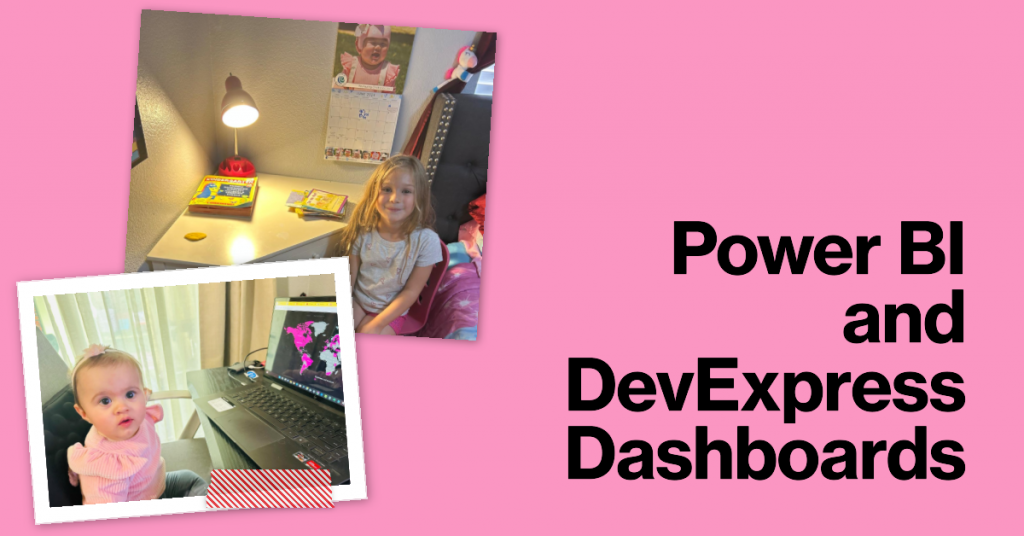
This article is written at the request of my oldest daughter, Sara (6 years old), who wanted to be included alongside her younger sister, Emma (1 year), in a blog post.
It was a busy morning at Xari, a data company struggling to choose the right analytics tool for their growing needs. In the boardroom, Sara, the head of business intelligence, and Emma, the lead developer, sat across from each other, each advocating for a different solution.
Sara, a long-time Power BI user, loved its intuitive interface. “Power BI is perfect for business users like our analysts,” she explained. “They can create reports, visualize trends, and explore data without needing a developer’s help. Plus, since it’s part of Microsoft’s ecosystem, integration with Excel and Azure is seamless.”
Emma nodded but countered, “That’s true, but Power BI forces us into Microsoft’s ecosystem. DevExpress Dashboards, on the other hand, gives us more freedom. We can embed dashboards directly into our applications and customize them exactly how we need. Our developers wouldn’t be constrained by Power BI’s predefined functionalities. After all, we are a software shop and we love to code.”
Sara acknowledged the point but had another concern. “But what about accessibility? Power BI has a desktop application, a web version, and even mobile apps. Our executives love checking reports on their phones.”
Emma leaned back, thinking. “That’s a valid point but we can integrate DevExpress Dashboards in our clients apps (web, desktop and mobile), and since we control the environment, we can ensure the experience is exactly what our users need rather than relying on a separate app.”
Their discussion shifted to pricing. “Power BI is affordable for individuals and small teams,” Sara pointed out. “The Pro plan is just $10 per user per month. Even if we need advanced features, we can upgrade to Premium.”
Emma, however, was skeptical. “Sure, but those costs add up quickly as we scale. DevExpress might have a higher upfront cost, but it’s a one-time purchase or an annual subscription, which can be more cost-effective in the long run.”
Support and security were next on the list. “Power BI benefits from Microsoft’s enterprise security features, including integration with Azure Active Directory,” Sara emphasized. “That’s crucial for data protection and compliance.”
Emma, always thinking from a developer’s perspective, countered, “DevExpress Dashboards rely on the security model of the application they’re embedded in. That means we have full control over authentication, whether it’s OAuth, JWT, or custom security measures.”
As the meeting continued, they considered advanced features. “Power BI’s AI-powered insights are a game-changer,” Sara said. “With natural language querying, real-time data streaming, and predictive analytics, it goes beyond simple dashboards.”
Emma, however, was more focused on performance. “AI is great, but we need something that works seamlessly inside our applications. Also DevExpress is releasing AI features as we speak, so it is just a matter of time and we can always add Semantic Kernel to the mix ourselves.”
By the end of their discussion, they both realized there was no single perfect answer. Power BI was a powerful, user-friendly tool with strong Microsoft integration, while DevExpress Dashboards offered deep customization and embedding options for developers.
Sara tapped her pen on the table. “So, where does that leave us?”
Emma smiled. “Good question.”
Their final decision? Stay tuned for the next blog post of Sara and Emma. ?